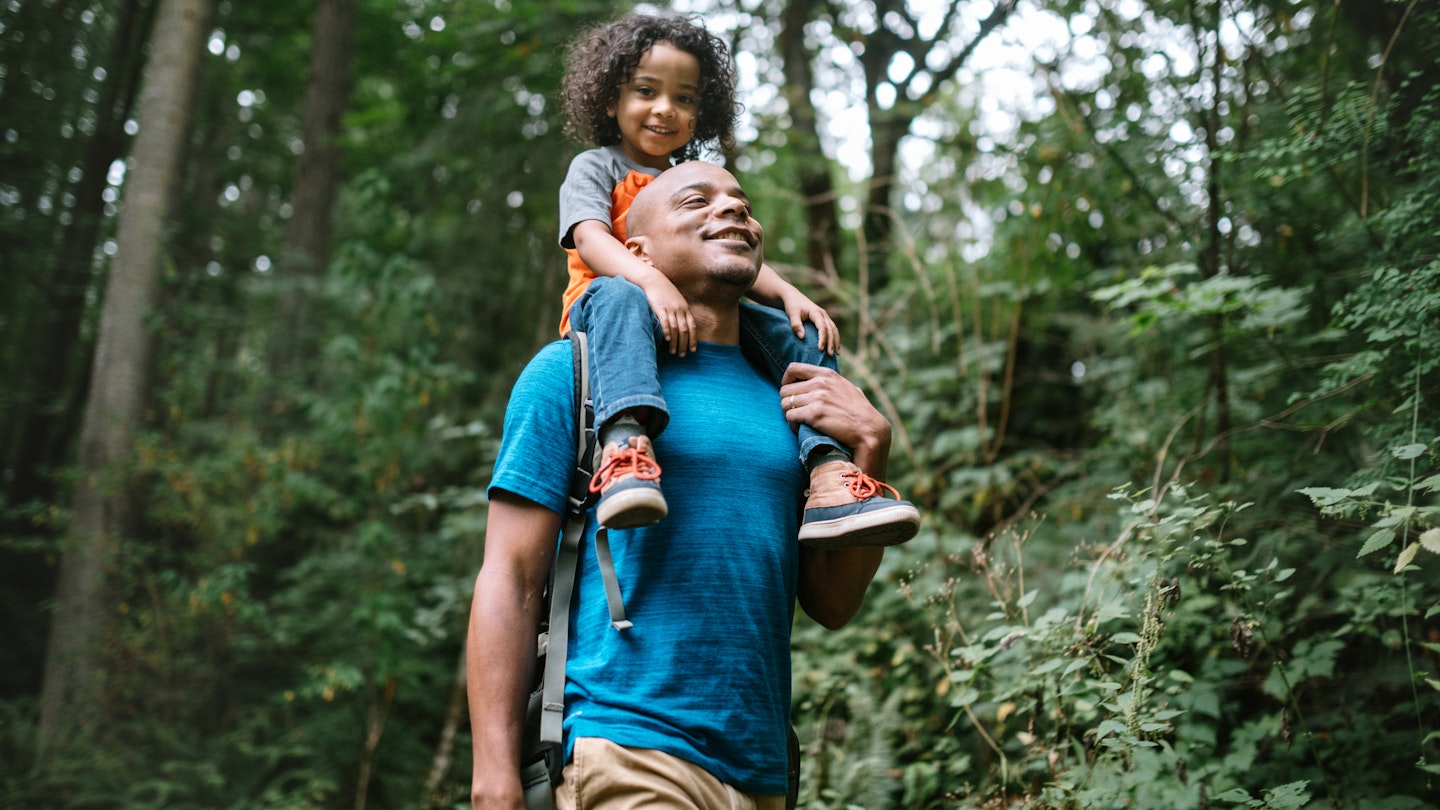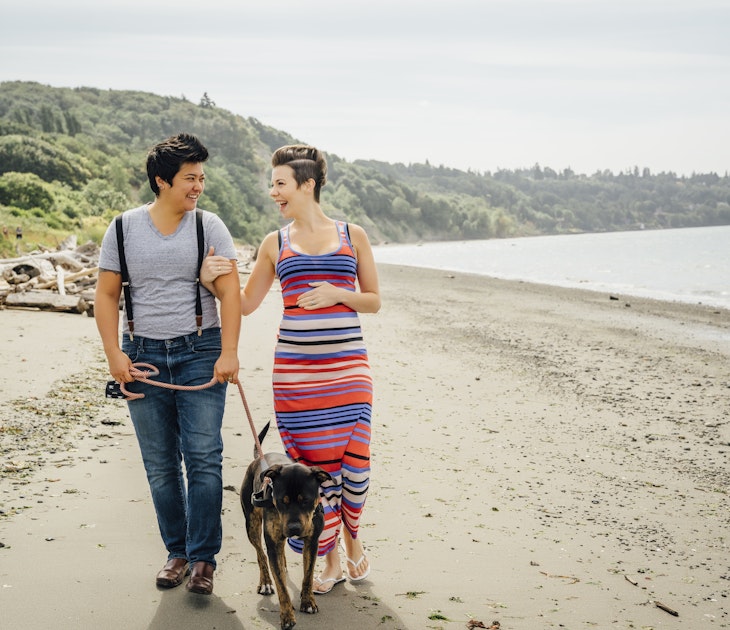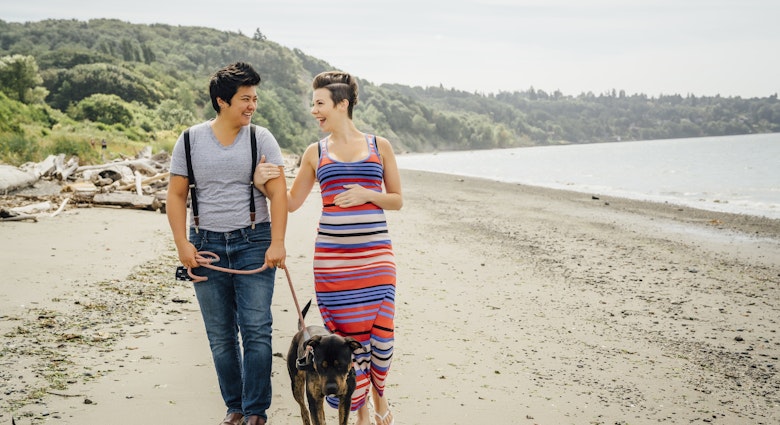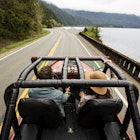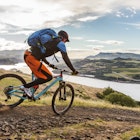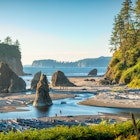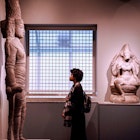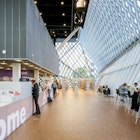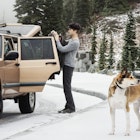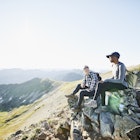Washington’s nickname, the Evergreen State, fits it well. This is a place rich in alpine meadows and old-growth forests, lakes and rivers, waterfalls and wildflowers. And what makes all this green beauty possible? Rain – lots of it. This corner of the Pacific Northwest (and its largest city, Seattle) have a well-earned reputation for wet, drizzly weather.
But that’s only half the story. The Cascade Mountains divide Washington into two distinct parts. On the west side, green forests stretch to the Pacific Ocean, but east of the mountains it’s typically warmer and drier. While the Olympic Peninsula rainforests might see up to 150 inches of rain a year, the eastern parts of the state get less than 10 inches. Meanwhile, the Cascade Mountains get around 200 inches of snowfall each winter.
In Western Washington, daytime temperatures rarely go above 80°F in summer or below 45°F in winter (though winter nights can dip below freezing). Eastern Washington temperatures are hotter in summer and colder in winter, and this part of the state can see 300 days of sunshine a year. Wherever you're headed in Washington, here are the best times to visit.
The July–September high season is the best time for warm, dry days
July and August are the warmest and driest months in Washington and its high season – even Seattleites get a little sun. Most visitors opt to visit in summer and early fall (July through September). Hotel prices go up, and there are more people in popular neighborhoods and at big tourist attractions. Note that Washington State ferries add a summer surcharge to fares from May to September.
National parks and campgrounds are open, temperatures are mild and the rain has eased, creating beautiful conditions for outdoor activities such as hiking and camping or sipping a beer on the patio. Coastal storms have calmed down, and the ruggedly beautiful Washington coast beckons. Early fall is the best time to visit wineries, ideally by bicycle.
The November–March low season is best for winter sports fans
November to January is the coldest and wettest period in Washington (averaging 5-6 inches of precipitation per month). Campgrounds are usually closed, and many back roads are inaccessible. On the plus side, hotel prices tend to be lower.
This is technically the low season, but it’s prime time for winter sports. Ski season begins as early as mid-November and continues through to March, though snow lingers at higher elevations into July. Washington has some top-notch alpine ski resorts, as well as countless opportunities for cross-country skiing and snowshoeing.

The shoulder seasons (April–June and October) are quiet and damp
The shoulder seasons – covering the early spring and fall – can be an ideal time to visit if you’re hoping to avoid the crowds, and are willing to take your chances on the weather. It’s likely to rain on you, but you may also get lucky with a few glorious spring or fall days. You can probably find space at campsites without making reservations, and there won’t be long lines at major attractions.
January sees plenty of powder on the slopes
Western Washington in January can be pretty gloomy, with many unbroken cloudy days and lots of cold rain. But if you’re a skier or snowboarder, this is a great time to head for the hills, where the high elevation turns all that precipitation into fluffy powder. In cities, it’s perfect weather for snuggling into a cozy pub or coffee shop with that new book you got for Christmas. For nature lovers, this is the peak time to take an eagle-watching excursion along the Skagit River.
Key Events: Lake Chelan Winterfest
Stay indoors and eat in February
The cloudy days continue, but at least February is a short month! Seek out Valentine’s Day specials at wineries and fine restaurants, like a three-course dinner at the Hotel Sorrento or the all-vegan Cafe Flora in Seattle. Rent a house with a fireplace on Long Beach Peninsula, or avoid the hassle of winter driving and take an Amtrak train to the mock-Bavarian town of Leavenworth.
March sees spring start to poke through the snow
Little hints of spring begin to pop up in March, especially in the eastern half of the state. In Seattle, Pike Place Market celebrates spring with Daffodil Days, alongside food tours and cooking classes. Hotel prices and airfares are relatively inexpensive, and the summer crowds have yet to arrive. Spend a rainy day at the Museum of Pop Culture, or play some pinball at the Racket in Bellingham.
Key Events: Wings Over Water NW Birding Festival, Taste Washington
April is the time to get out and explore
April is considered the beginning of the end of winter in the Cascade Mountains; snow might continue to fall, but most of the year’s big powder dumps have already been delivered. Elsewhere, flowers are blooming, temperatures are warming and locals are emerging from the winter gloom. A pro tip: Pack your rain gear and your sunglasses, because, well, you never know.
Snow-packed roads mean it’s not the best time for exploring the wilderness, but April usually brings perfect weather for scenic drives at lower elevations – check out the colorful fields of tulips in the Skagit Valley, or visit the intensely green and mysterious Hoh Rainforest on the Olympic Peninsula.
Key Events: Seattle International Film Festival, Skagit Valley Tulip Festival
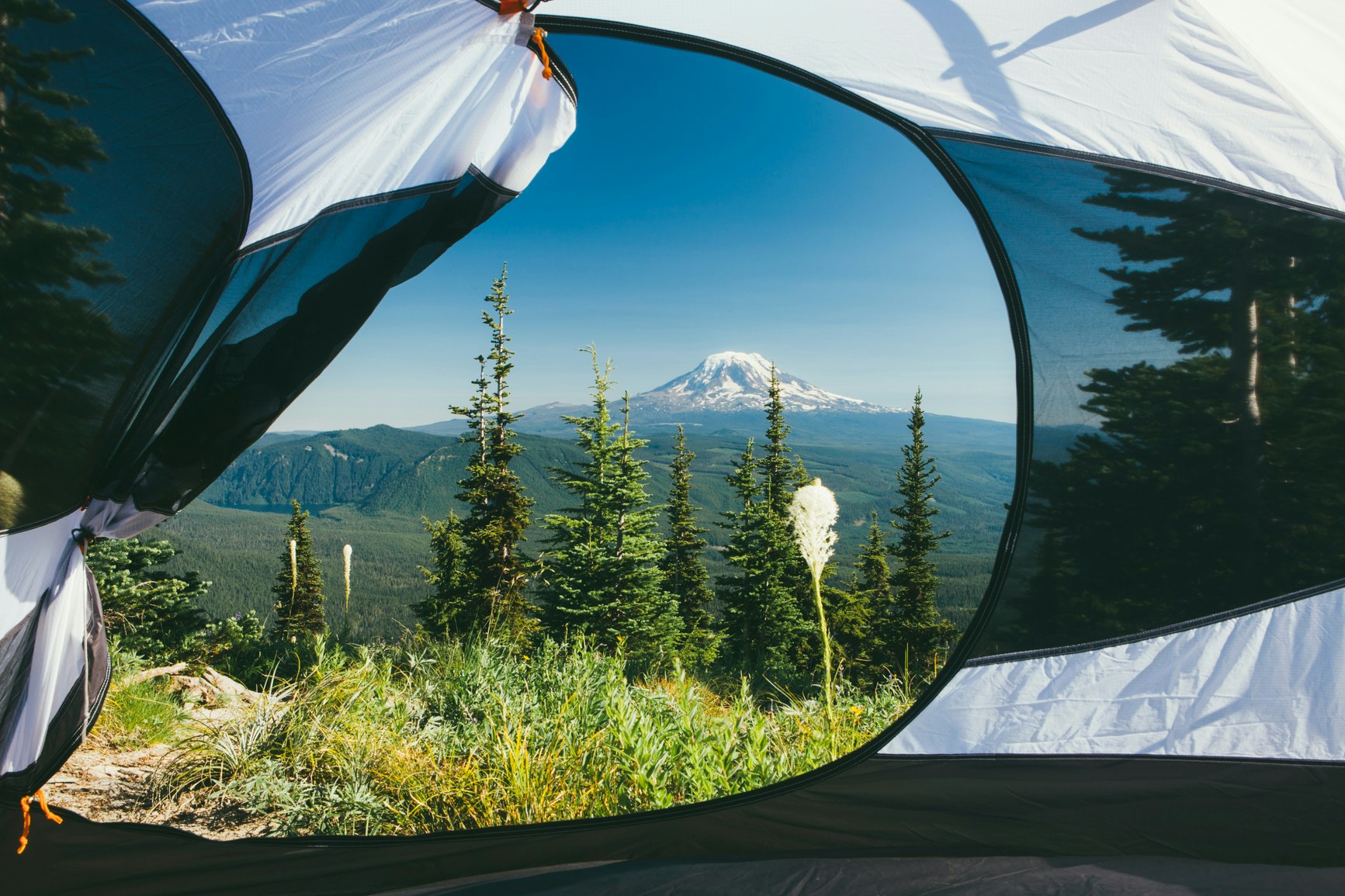
May sees spring – and whales – sweep into Washington
Spring in Washington can be delightful, though it's also frequently damp. Wildflowers and orchard blossoms are going strong by now, and as long as you remember your raincoat you can basically live a normal life. Whale-watching boat tours are a great family activity for May, and visiting any of the San Juan Islands is almost mandatory, whether you're camping or glamping or on a cycling, driving or sea kayak tour.
Key Events: Poulsbo Viking Fest, Northwest Folklife Festival
June is the start of the camping season
Springtime continues to morph into summer as more campgrounds and trails open up and early tourist activities begin. If you’re lucky, you’ll get summer-like weather without the summer crowds. Outdoor festivals are everywhere; head to Seattle’s Fremont neighborhood for a definitive dose of Pacific Northwest street life.
Key Events: Orcas Island Lit Fest, Leavenworth International Accordion Celebration, Fremont Solstice Parade, Seattle PrideFest
July is proper summer in Washington
July is officially summer, with warmer temperatures, sunnier days, and bigger crowds to prove it. This is an excellent time for a water-based adventure such as sea kayaking around the San Juan Islands or paddling Puget Sound. July is also great for backpacking into the Mount Rainier wilderness; head to the trailheads at Paradise for a range of great hiking options.
By now, roads into the mountains are plowed, so it’s also a great time to visit scenic viewpoints in the Cascades. It’s hard to beat the drive to Artist Point along the Mt Baker Scenic Byway from Bellingham.
Key Events: Capitol Hill Block Party, Seafair, Sequim Lavender Festival
August is the time to go camping on the coast
Summer continues as temperatures rise and rainclouds disappear, and arts and music festivals pick up. On the east side of the Cascades, heat can be extreme and wildfires are a concern. Riverside and coastal campgrounds are an excellent way to beat the heat, but reserve ahead as they do book up quickly. If you were lucky and wise, you planned ahead and scored a campsite at stunning Kalaloch Beach on the Olympic Coast.
Key Events: Emerald City ComicCon, Makah Days, Washington State International Kite Festival
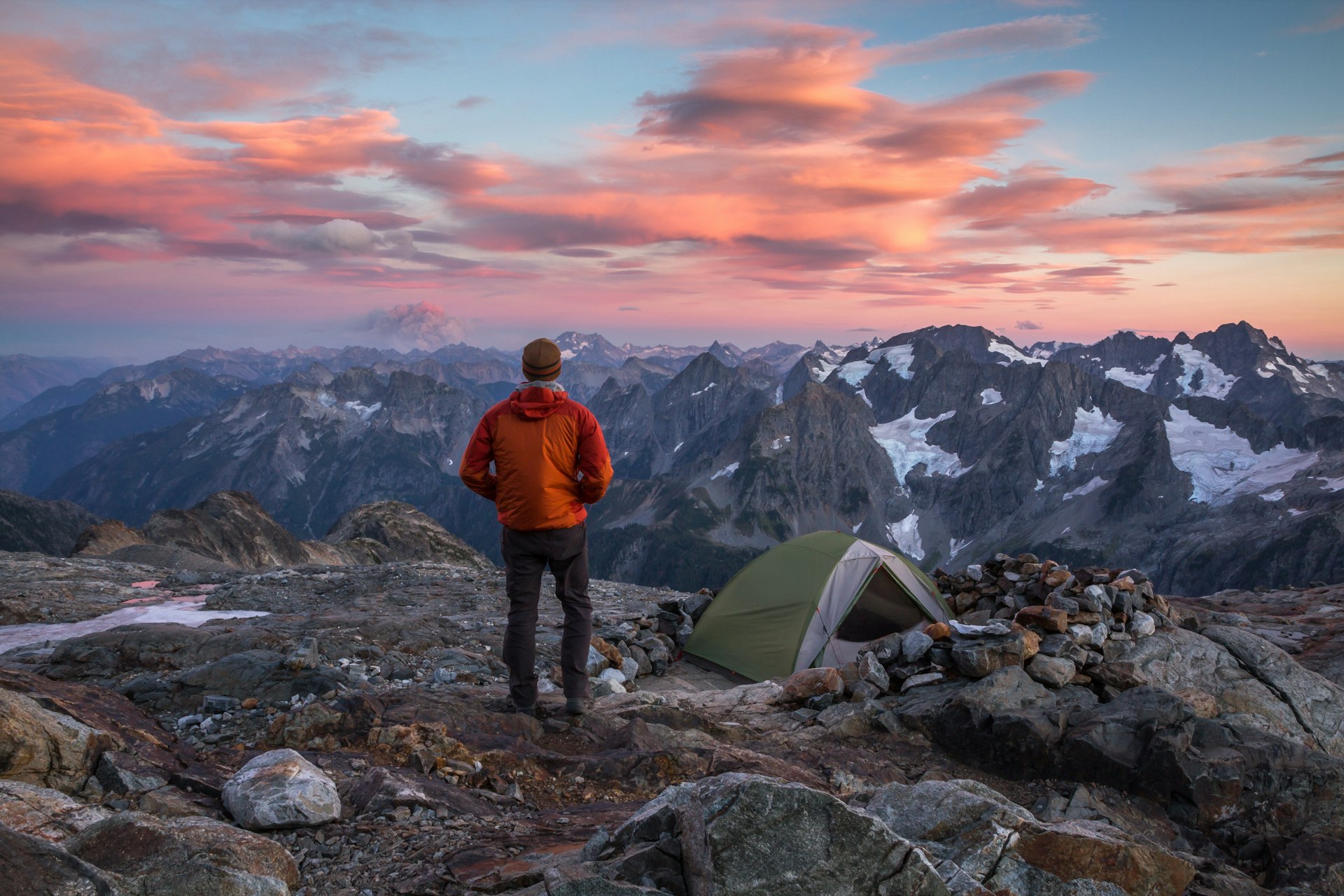
September is great for quieter hiking
The beginning of fall means more or less reliably beautiful days with cooling temperatures and impressive fall colors. Most hiking trails and campgrounds are still open, and are much less crowded than they are in summer, especially after the Labor Day weekend.
The weather is still warm enough for a backpacking trip into the Goat Rocks Wilderness or a day hike in the Enchantments. On four wheels, take a drive up to the Johnson Creek Observatory overlooking Mount St Helens to admire the views.
Key Events: Bumbershoot, Port Townsend Wooden Boat Festival
You may get lucky with the weather in October
Sometimes there’s an amazing “second summer” in October, with gorgeous warm days, fall colors, and few crowds. Even if the weather doesn’t get that warm, this is a beautiful time of year in the Pacific Northwest. It's usually a little cold at night for camping, but it can still be worth it if you’re prepared. Harvest season makes this a great time for food and wine; check out the annual Fall Festival at Seattle’s Pike Place Market.
Key Events: CrabFest, Leavenworth Oktoberfest, Issaquah Salmon Days
November ushers in the ski season
In a good snow year, ski resorts are open by Thanksgiving. If it’s not one of those years, or you’re not a skier, wear layers and focus on indoor activities. This is the time to bundle up and scurry between museums, cafes, pubs, and bookstores (including the beloved Elliott Bay Book Company in Seattle). Or try some interesting wines in Walla Walla, a cute town packed with tasting rooms.
Key Events: Short Run Comics & Arts Festival
December sees Washington gearing up for the holidays
Holiday parades and tree-lighting festivals brighten up the dreary days and long nights of December. In Seattle, look for floating light shows at the Christmas Ship Festival. In the winter-loving mountain town of Leavenworth, all of Front Street is aglow, and the year-round Christmas decorations shop finally makes sense. Look for cheap flights for the ski season; The Summit at Snoqualmie is just an hour’s drive from Seattle.
Key Events: Christmas Ship Festival, Leavenworth Christmas Lighting Festival
Keep planning your trip to Washington:
Explore the state without spending a penny with 10 free things to do in Washington state
Hit the trails with the 10 of the best hikes in Washington
Discover all the Washington highlights with The top 10 road trips in Washington State
Plan like the professionals with Copy My Trip: nature, luxury and mind-blowing cuisine in the USA’s Pacific Northwest

